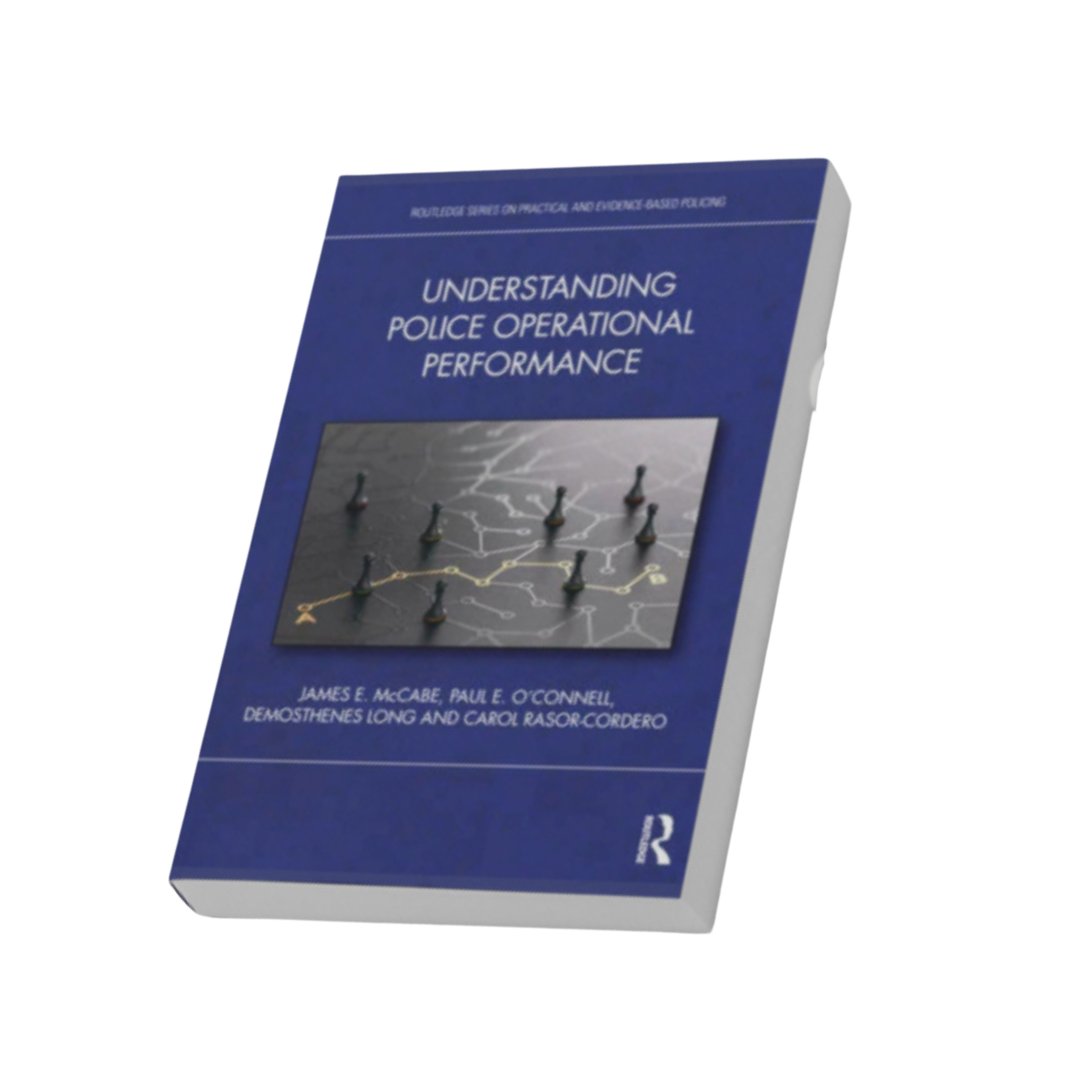Resources
Published Books
01.
–
UNDERSTANDING POLICE OPERATIONAL PERFORMANCE
By James E. McCabe, Paul E. O'Connell, Demosthenes Long, Carol Rasor-Cordero
Understanding Police Operational Performance provides a roadmap for police agencies to implement performance-improvement strategies that work. This book provides an easy-to-read, comprehensive overview of the key indicators of successful internal operations of police agencies in the United States, and equips readers with the tools needed to bring police organizations to top performance.
Ideal for law enforcement professionals, as well as city or county administrators and policymakers, this book offers practical advice for planning and conducting an evaluation of the various components of a police organization. It is also appropriate for use in law enforcement, criminal justice, and political science courses.
02.
–
PERFORMANCE-BASED MANAGEMENT FOR POLICE MANAGEMENT
by Paul E. O’Connell & Frank Straub
All law enforcement organizations are now being challenged to:1) know what information is contained in their various information systems (such as a CAD or RMS); 2) analyze that data to identify trends and aberrations; 3) use that data to guide strategic and tactical decisions; and 4) evaluate and essentially prove the effectiveness of their various operations (via timely and accurate data reflecting organizational outputs and long-term outcomes).
This text tracks the development of the the performance-based management movement within American policing and includes practical guidelines for establishing such a system in any public safety organization.
03.
–
POLICE PERFORMANCE APPRAISALS. A Comparative Perspective
by Serdar Kenan Gul & Paul E. O’Connell
Annual performance appraisals for personnel are a burden, yet they are a necessity. Failure to complete them can result in significant liability for a municipality, a police department, and its employees. In the age of increasing public demands for police transparency and accountability, the practice of completing and properly utilizing annual performance reviews for police department personnel has become more important than ever. This text provides practical guidelines for properly documenting and evaluating the work of your employees, and linking that information into unit and organizational goals.
Recent Articles
01.
–
FACTORS RELATED TO POLICE STAFFING
by James E. McCabe and Paul E. O’Connell
This study explores data related to police staffing through a convenience sample of 68 American police departments. The relationship between police officer staffing, and exogenous variables such as crime, population, calls for service, and endogenous variables such as workload, response time, patrol deployment and service times was explored. The results indicate that the percentage of officers assigned to patrol, violent crime, the rate of calls for service, and summer response time are significantly related to the size of a police department. In addition, the study introduces workload variables that could be useful in understanding service demands and staffing decisions in local police departments in the United States and explores factors related to police staffing.
read & download pdf
02.
–
ANALYSIS OF POLICE DEPARTMENT STAFFING. How Many Do You Really Need?
by James E. McCabe
This paper provides an overview of common methds of determining police department staffing size, and then makes the argument that staffing should be based on an empirical assessment of a department’s workload. The paper goes on to discuss the “Rule of 60” and the application of that rule on a fictional department. The analysis presented shows “peak workload” demand modeling and alternative shift schedules to arrive at the optimum level of police officers for patrol.
read & download pdf
03.
–
REFLECTION, COLLECTIVE WISDOM AND THE NEED FOR ROBUST DISCOURSE IN PUBLIC SERVICE DECISION MAKING
by Paul E. O’Connell and Frank Straub
The old adage, "No one of us is as smart as all of us" should be a guiding principle for all police managers. The chain of command and hierarchical structure of American police departments serve as barriers to open exchange of knowledge. This article calls for an entirely new approach to police management and provides practical recommendations for tapping into the hundreds of years of tacit knowledge and practical experience possessed by your colleagues.
read & download pdf
04.
–
USING PREFORMANCE DATA FOR ACCOUNTABILITY: The New York City Police Department’s CompStat Model of Police Managemet
by Paul E. O’Connell
Over twenty-five years ago, American policing was transformed by a new operating model and mindset, known as 'COMPSTAT.' This article tracks the early development and spread of COMPSTAT and explains the critical elements of the model that can radically change management behaviors and empower police managers to not just capture and analyze timely and accurate performance data, but to actually use it effectively.







